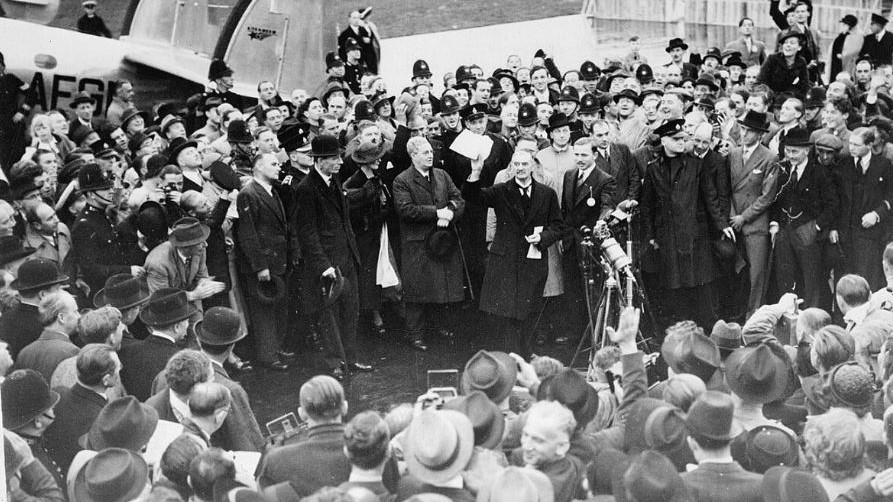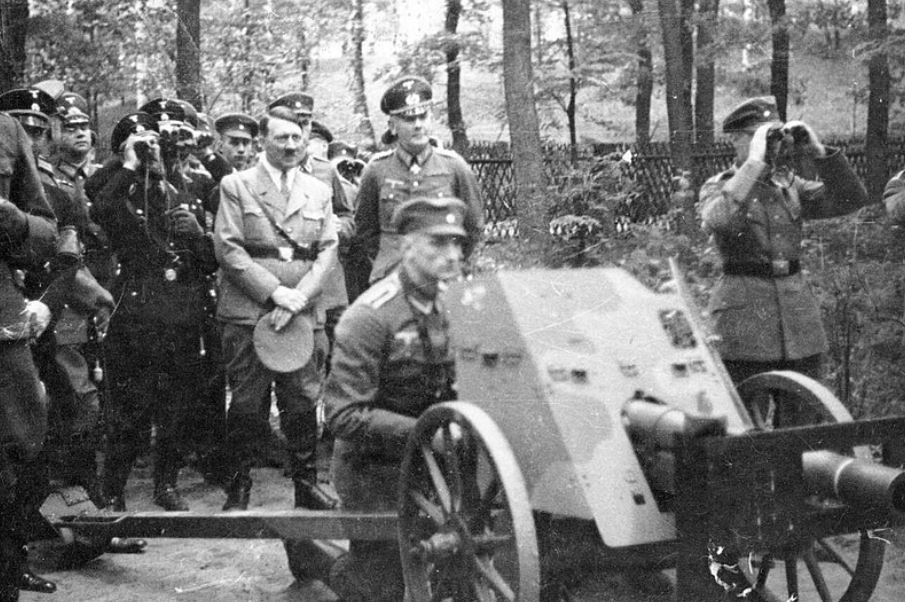Few World War 2 battles stand out as prominently as the Battle of Kursk. Fought between July 5 and August 23, 1943, this monumental clash on the Eastern Front marked a decisive turning point in the conflict between Nazi Germany and the Soviet Union.
As Hitler’s last major offensive operation in the East, the Battle of Kursk represented a desperate attempt to regain the initiative lost after the devastating defeat at Stalingrad.
This article delves into the strategic importance, the forces involved, and the key events of this pivotal battle, exploring how it ultimately changed the course of the war on the Eastern Front.
- 1. The Strategic Importance of the Battle of Kursk
- 2. The Forces Involved at Kursk
- 3. Operation Citadel – The German Offensive at Kursk
- 4. The Soviet Defenses at Kursk
- 5. The Air Battles at Kursk
- 6. The Battle of Kursk Outcome
- 7. Kursk, The Turning Point on the Eastern Front
- 8. Final Thoughts on the Battle of Kursk
- Further Reading
1. The Strategic Importance of the Battle of Kursk
The Battle of Kursk centered around a massive bulge in the front line. It protruded westward into German-held territory.
This salient, roughly 150 miles wide and 100 miles deep, presented both an opportunity and a threat.
For the Germans, it offered a chance to encircle and destroy a significant portion of the Red Army, potentially crippling Soviet offensive capabilities. Hitler and his generals saw this as a means to stabilize the Eastern Front and buy time to address mounting challenges elsewhere, particularly the looming threat of Allied landings in Western Europe.
For the Soviets, the Kursk salient was a springboard for future offensives into Ukraine and Belarus.
Soviet leadership, including Stalin and his generals Zhukov and Vasilevsky, recognized the strategic value of the position and were determined to hold it at all costs. Moreover, they saw the impending German attack as an opportunity to bleed the Wehrmacht dry and set the stage for a massive counter-offensive.
The months leading up to the battle saw feverish preparations on both sides.
The Germans amassed a formidable force, including their latest and most advanced weapons. Meanwhile, the Soviets constructed elaborate defensive positions, turning the Kursk salient into a fortress backed by powerful reserve forces.
2. The Forces Involved at Kursk

The German offensive, codenamed Operation Citadel, brought together some of the most elite and well-equipped units of the Wehrmacht.
Army Group Center, under Field Marshal von Kluge, deployed the 9th Army led by Walter Model to attack the northern face of the salient.
In the south, Army Group South under Field Marshal von Manstein positioned the 4th Panzer Army and Army Detachment Kempf to strike from the southern edge.
In total, the Germans committed over 780,000 men, nearly 3,000 tanks and assault guns, 10,000 artillery pieces, and about 2,000 aircraft. Among these were their latest weapons, including the formidable Tiger tanks and the new Panther medium tanks, as well as the Ferdinand tank destroyer.
The Soviet defenses were even more impressive in scale.
Aware of the impending attack thanks to excellent intelligence, including information from the Lucy spy ring, the Red Army had positioned approximately 1.9 million soldiers, supported by over 5,000 tanks, 25,000 artillery pieces, and 2,400 aircraft.
The Soviet force included multiple armies of the Central Front under General Rokossovsky defending the northern face, and the Voronezh Front under General Vatutin guarding the southern sector.
More importantly, the Soviets had prepared a defense in depth, with multiple heavily fortified lines backed by powerful mobile reserves, including the Steppe Front under Ivan Konev. The entire salient was turned into a maze of trenches, bunkers, minefields, and anti-tank positions.
3. Operation Citadel – The German Offensive at Kursk

Operation Citadel began on July 5, 1943, with a massive artillery barrage followed by ground and air attacks on both the northern and southern faces of the Kursk salient.
In the north, Model’s 9th Army made slow progress against fierce Soviet resistance. The heavily mined and fortified defenses took a heavy toll on German armor and infantry alike.
In the south, Manstein’s forces achieved greater initial success. The 4th Panzer Army and Army Detachment Kempf pushed through the first Soviet defensive lines, albeit at a high cost. The fighting was particularly intense around the town of Prokhorovka, where on July 12, one of the largest tank battles in history took place.
The Battle of Prokhorovka saw hundreds of tanks clashing in close-quarters combat.
The Germans, with their superior Tiger and Panther tanks, inflicted heavy losses on the Soviets.
However, the sheer number of Soviet tanks, coupled with the confined terrain that negated some of the German advantages, resulted in a tactical stalemate. More importantly, it marked the culmination of the German offensive in the south.
Throughout the offensive, the Germans demonstrated their tactical prowess and the superiority of much of their equipment. The Tiger tanks, in particular, proved nearly invulnerable to Soviet anti-tank weapons and could destroy T-34s from long range.
However, the strength of the Soviet defenses, the vast numbers of men and materiel the Red Army could bring to bear, and the difficult terrain all conspired to slow and eventually halt the German advance.
4. The Soviet Defenses at Kursk

The Soviet defensive strategy at Kursk was a masterpiece of military planning.
Learning from the painful experiences of 1941 and 1942, the Red Army had constructed a defense in depth consisting of multiple, heavily fortified lines. Each of these lines was packed with anti-tank guns, artillery, and infantry positions.
The first two defensive belts were 16-20 kilometers deep, with 5-7 kilometers of empty ground between them. Behind these were three more defensive lines.
In total, the defensive zone extended 100-130 kilometers from front to rear. The Soviets had laid over 400,000 mines and dug thousands of kilometers of trenches and anti-tank ditches.
Moreover, the Soviets had the advantage of knowing when and where the German attack would come.
Thanks to intelligence from various sources, including the British-run Lucy spy network, the Soviet high command was well-informed about German plans. This allowed them to position their forces optimally and prepare counter-offensive plans.
5. The Air Battles at Kursk
The Battle of Kursk also saw intense aerial combat.
The Luftwaffe, despite being stretched thin across multiple fronts, managed to assemble a powerful air group for Operation Citadel. German aircraft, particularly the Fw 190 fighter-bombers, played a crucial role in supporting ground operations and engaging Soviet armor.
However, the Soviet Air Force had made significant strides since the early days of the war.
With improved aircraft, tactics, and pilot training, they were able to challenge Luftwaffe superiority for the first time.
The air battles over Kursk were among the largest of the war, with hundreds of aircraft engaged in swirling dogfights and ground attack missions.
While the Luftwaffe initially gained the upper hand, the Soviets were able to contest control of the skies throughout the battle. This denied the Germans the kind of air superiority they had enjoyed in previous campaigns, further complicating their ground offensive.
6. The Battle of Kursk Outcome
By mid-July, it was clear that Operation Citadel had failed to achieve its objectives.
The northern attack had been effectively contained, while the southern thrust, despite initial gains, had been stopped short of a breakthrough.
On July 13, Hitler called off the offensive, partly due to the Allied landings in Sicily which demanded a reallocation of forces.
However, the battle was far from over.
On July 12, the Soviets had launched their own offensive against the Orel salient to the north of Kursk. This was followed on August 3 by another major offensive against the Belgorod-Kharkov sector south of Kursk.
These powerful counter-blows, long planned by the Soviet high command, now fell on German forces exhausted by their own failed offensive.
The Soviet counter-offensives achieved significant success, pushing the Germans back and recapturing Orel, Belgorod, and eventually Kharkov. By the end of August, the front line had been pushed back almost to where it had been in spring 1942, before the German summer offensive of that year.
The human cost of the Battle of Kursk was enormous.
German casualties are estimated at around 200,000 men, while Soviet losses were even higher, possibly up to 860,000 casualties. Both sides also lost huge numbers of tanks, aircraft, and other equipment.
7. Kursk, The Turning Point on the Eastern Front
The Battle of Kursk marked a definitive turning point on the Eastern Front.
It was the last time the Germans were able to launch a strategic offensive in the East. From this point on, the initiative passed decisively to the Soviet Union.
Several factors contributed to making Kursk such a pivotal moment:
- German offensive capacity was severely blunted. The losses in men and materiel, particularly experienced troops and irreplaceable weapons like the Tiger tanks, weakened the Wehrmacht’s ability to conduct large-scale operations.
- Soviet defensive tactics proved highly effective. The multi-layered defenses and use of mobile reserves became a template for future operations.
- Soviet industry demonstrated its ability to out-produce Germany. Despite heavy losses, the Red Army was able to replace its equipment faster than the Germans.
- The Red Army showed it could now match and even surpass German tactical proficiency. The successful counter-offensives demonstrated a new level of operational skill.
- German morale was severely affected. The failure at Kursk, coming after the disaster at Stalingrad, further eroded confidence in ultimate victory.
- Soviet confidence soared. The ability to first blunt a major German offensive and then launch successful counter-offensives boosted morale throughout the Red Army and Soviet society.
8. Final Thoughts on the Battle of Kursk
The Battle of Kursk stands as one of the most crucial engagements of World War 2. It marked the point at which the Soviet Union decisively seized the strategic initiative on the Eastern Front, an advantage they would not relinquish for the remainder of the war.
The failure of Operation Citadel not only ended Germany’s ability to launch major offensives in the East but also demonstrated the growing strength and sophistication of the Red Army.
For the Germans, Kursk represented a last, desperate attempt to regain the upper hand in a war that was rapidly slipping away from them.
Its failure heralded the long retreat that would eventually end in Berlin less than two years later.
For the Soviets, it was a vindication of their defensive strategy and a launchpad for the series of offensives that would drive the Wehrmacht out of Soviet territory and eventually into the heart of the Third Reich.
The Battle of Kursk thus serves as a stark reminder of the enormous scale and intensity of the war on the Eastern Front, as well as a testament to the courage and sacrifice of those who fought there.
Its outcome shaped not only the remainder of World War 2 but also the post-war order in Europe, cementing the Soviet Union’s status as a superpower and setting the stage for the Cold War to come.
Further Reading
If you enjoyed this article about Should Germany Have Undertaken the Battle of Kursk? you may be interested to read more about other wars in history, such as the American Civil War and World War 1.
Here are some specific World War 2 articles:
- Should Germany Have Fought the Battle of Kursk?
- What If Germany Had Won the Battle of Kursk?
- Who were the Ghost Division of World War 2?
- What were the German Special Forces called in World War 2?
- What Side was Ireland on in World War 2?
- Who were the Main Dictators of World War 2?
- Why did France lose so easily in World War 2?
You may also enjoy these articles about the World Wars:







